While I really only enjoy Thanksgiving turkey in the hour after it comes out of the oven, it certainly seems the majority are in it for the sandwiches. Day-after turkey sammies are a legendary aspect of Thanksgiving not attributable to any religious, historical or cultural aspect of the day. So why bother with a roasted bird, what if you just skipped right to the beloved sandwich? And if you’re going to go for turkey sandwiches, why not lean in hard and make turkey pastrami instead?
How hard is pastrami to make, anyway?
So hard. I made pastrami—real beef pastrami—exactly once. It is canon Amanda dinner party. I made almost twenty pounds of it, lovingly sourced, cured, smoked and served. It is, despite years of mic drop culinary feats, the dish everyone goes back to. “Hey, have you thought about revisiting that pastrami?” Not a chance, frendz,; life is not long enough.
Which is when I started wondering if you could cut some corners, and I think the fact that I’m here talking about it speaks for itself.
Setting up the meat
I went to multiple sources for my setup, including the Kosher Dosher blog, Amazing Ribs and every recipe for turkey pastrami I could find, and then I applied all of that knowledge to a scientific method I call “winging it.” I started with a whole turkey breast, deboned, skin on. I have since found myself wondering why not try the recipe with dark meat, but alas, I did not.
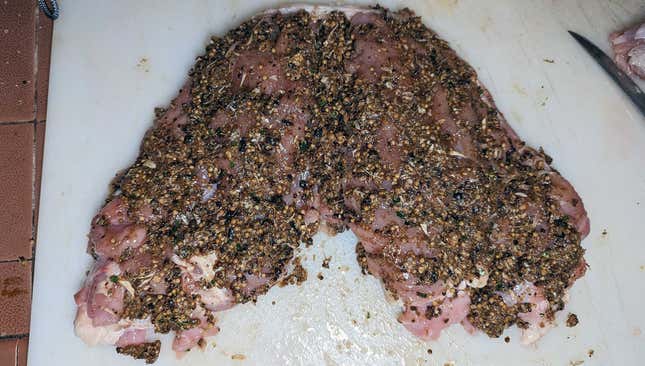
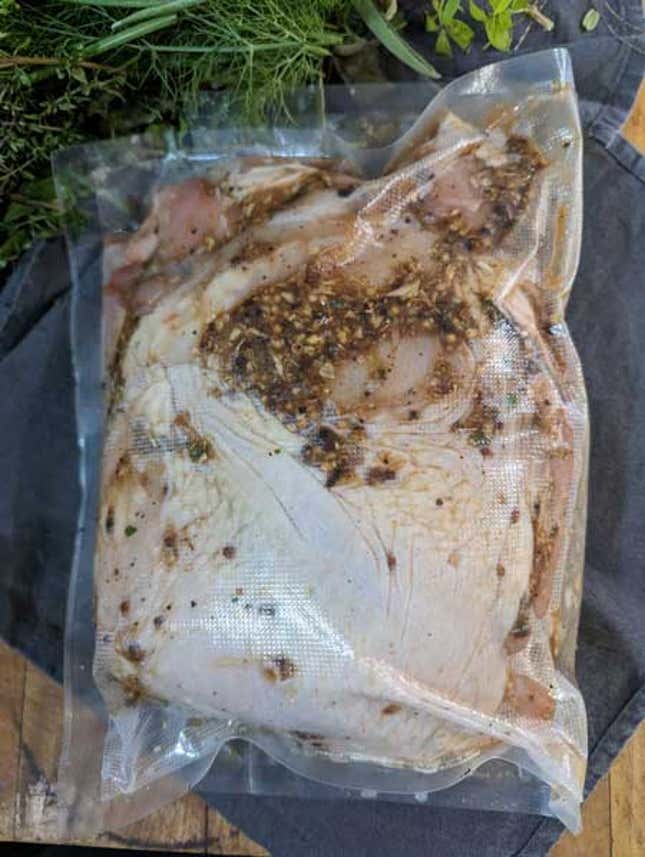
I did rely on Kosher Dosher’s pastrami spice mixture, and to make your life easier, I’ve created a tool to help you figure out how much you need of each ingredient by entering the weight of your turkey. Throw all the spices into the blender or food processor and get them to a nice medium grind. Rub it all over the breasts, and then I placed one breast on top of the other. Place them in a vacuum bag and take out all the air (you can do this with a ziplock and the water displacement method instead). Now, the pastrami is going to hang out in the fridge and relax for five days.
The shortcut here, is that usually you simply “cure” the breasts with the prague powder, also known as salt cure #1. Instead, I’m skipping that step and going right to the spice mix, which happens to include more cure #1. While you could let the meat hang out in the fridge for two weeks, I found that five days was enough time to get a reasonable cure for our purposes.
Smoking hot
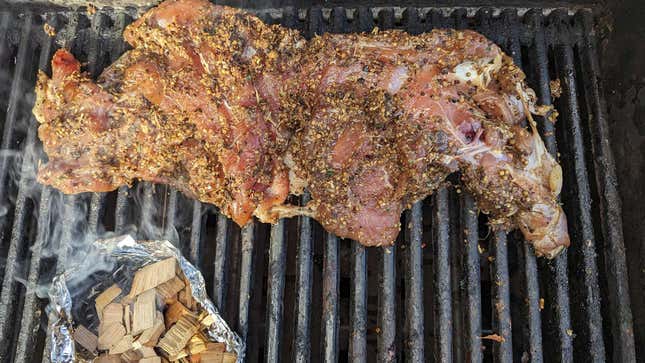
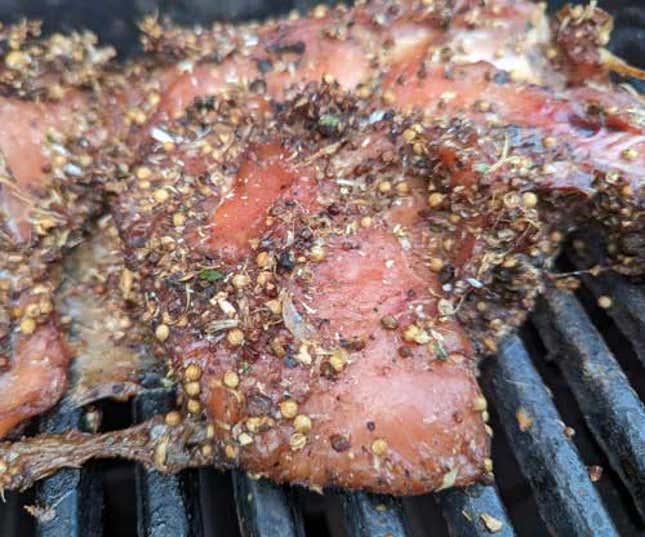
The smoke is an essential part of pastrami’s charm, but we want cold smoke, which means using a grill on the lowest possible setting, and keeping the turkey far away from the flame. I set up my gas grill with the front burner on low, positioned the turkey in the back of the grill, and used wood chips to get the smoke. I just placed them on a piece of tin foil near the front of the grill, and then set one side on fire using a torch. The rest of the chips slowly burned, creating smoke. I closed the lid, leaving it propped open just enough for the fire to get some oxygen. I did this three times over three hours, setting up the chips, lighting them on fire and then letting them slowly burn and smoke the turkey. At the end, you could tell the breast had a nice pellicle—that’s a skin that forms on the exterior of the turkey, meat and all.
Into the water bath
Which means it was time for it to come back inside and CTFO in the sous vide, at 145F for five hours. That’s the lowest temperature that is safe for turkey, and at that amount of time, the turkey is pasteurized. After that, I let it rest for 20 minutes and then took it out of the bag, put it on a cutting board, and then sliced it very, very thin on the bias.
A silken, perfect cold cut
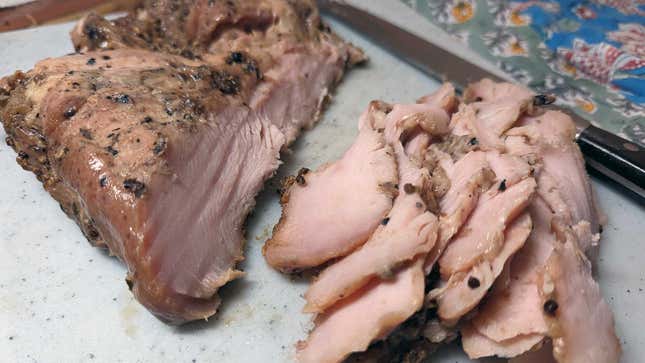
Despite cutting the process dramatically short (usually you’d cure it for weeks, and then go through a completely separate rub and smoke process), the meat still had a nice silkiness due to the sous vide and a great spicy flavor due to the rub. Smokiness was definitely there, and it sliced beautifully. As a result, I was able to layer it sky high for a pastrami sandwich for the ages, with thick mustard, pickles, a vinegary kraut, Russian dressing and melty gruyere.
This pastrami was a delightful variation that plays on the juiciness you get from sous vide, and the light smoldering smell you get from smoking, and the perfect texture you get from curing. The spice rub perfectly evokes the sense of pastrami. All told, this was about an hour and a half of active cooking and prep time, completely worthwhile.
You can also slice it a little thicker, and serve it like slices of meat on the plate, alongside some Russian dressing for more of an entree.
Turkey pastrami
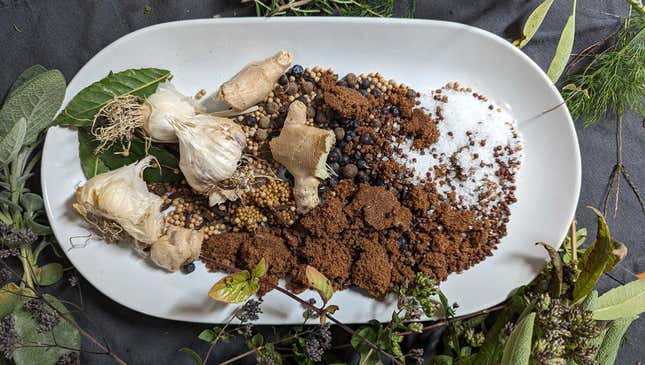
Ingredients
Equipment
- three cups of wood chips for smoking
- sous vide machine
1. Grind together all the spices, and then pack the spices onto both sides of the turkey breast. It should cover the entire breast.
2. Place the breast into a ziplock bag or vacuum bag and remove all the air from the bag. Place the bag in the refrigerator for five days, flipping the breast every day.
3. On the sixth day, set up your grill for smoking. Place the turkey as far away from the heat as possible, and the heat should be on the lowest setting. Set the woodchips on a piece of tin foil and light one side on fire. Allow the chips to light on fire, and then prop open the grill with only one or two inches of exposure. You want just enough air to feed the fire.
4. Every hour, set up another run of chips to burn. After the third hour, turn off the grill, fold the turkey in half, and then place it in a vacuum bag and remove all the air.
5. Sous vide the turkey at 145 F degrees and cook for five hours.
6. Allow the turkey to rest for 20 to 30 minutes, and then remove from the bag and slice on the bias, as thin as possible.









